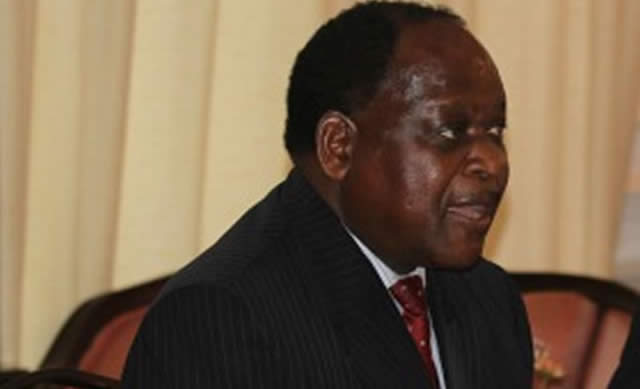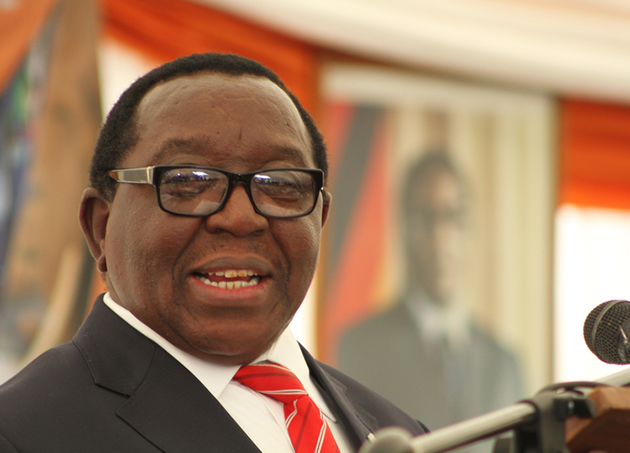$12bn needed for 2015 Zim-Asset projects

Prosper Ndlovu in Harare
THE country needs about $12 billion to finance the implementation of development projects under the Zimbabwe Agenda for Sustainable Socio-economic Transformation (Zim-Asset) blue-print this year alone with the private sector expected to inject 80 percent of the required funding.
This emerged during a one-day Zim-Asset workshop organised by the Office of the President and Cabinet here yesterday on the formulation of a communication strategy on the implementation of the blue-print.
Chief Secretary to the President and Cabinet Misheck Sibanda officially opened the workshop that was attended by representatives from different government departments, the media, economic experts, development partners and the private sector.
Sibanda said the government was working on conducting a mid-term review on the implementation of Zim-Asset towards the end of this year hence the need to come up with a communication strategy on progress made so far as well as the challenges encountered.
“Zim-Asset is due for mid-term review towards the end of the year. The upshot of it all is that hitherto we don’t seem to have a structured communication policy strategy that explains to our juniors in government and stakeholders in the private sector, civic society and the general citizenry the real development thrust, vision and strategic objectives of Zim-Asset and the role of different players in its implementation,” said Sibanda.
He said lack of a communication strategy has resulted in a range of negative perspectives such as comical satires and unwarranted criticism of the government.
“Misinformed claims have also been made by government critics to the effect that the blue-print is a lifeless document. Regrettably, such misconceptions might end up holding sway in the court of public opinion.”
Sibanda, however, said several milestones have been made towards realisation of set goals despite challenges facing the country in the context of lack of funding.
Economic expert, Gift Mugano, from Zimbisa, said a private sector stimulus was required to boost Zim-Asset gains and challenged all relevant stakeholders to play their role.
Zimbisa is a Zimbabwean Trust that was established in January 2014 with the goal of helping the country achieve sustained economic growth and reduce poverty by fulfilling the ambitions set in Zim-Asset and other sector policies, through improved public-private dialogue.
“Zim-Asset is a national agenda and all stakeholders have a role to play in its implementation. Value addition for instance has to be implemented by the private sector. The cost of Zim-Asset projects for 2015 is $12,03 billion and the government will only contribute 20 percent, which is $2.5 billion while donor agencies and the private sector should contribute 80 percent, which is $9.25 billion,” said Mugano.
The government has said a successful implementation of Zim-Asset required up to $27 billion.
Yesterday’s meeting also highlighted some of the major project targets earmarked for implementation under different Zim-Asset clusters and the need to adopt a multi-sectorial approach especially on developing a robust agriculture sector to achieve food security.
The targets involve mobilising about $300 million for the resuscitation of dormant mining firms, developing 125,000 housing units and training at least 200 masters or PhD graduates annually in geographic sciences and related mining skills.
The participants stressed the need to mainstream the contribution of development partners particularly harmonising funds from donors to ensure they are channelled towards financing major projects under the blue-print.
Zim-Asset was unveiled in 2013 as a five-year cluster based plan reflecting the strong need to fully exploit the internal relationships and linkages that exist between various facets of the economy.
These clusters include value addition and beneficiation, food security and nutrition, social services and poverty eradication, infrastructure and utilities development.
The clusters should be supported by three-enabling sub-clusters — fiscal reforms, information communication technology and efficient public administration and performance management.
During the plan period, the economy is expected to grow 7.3 percent with upward growth trajectory to 9.9 percent by 2018.
The envisaged success is based on a series of positive assumptions such as improved liquidity, revenue collection and access to credit lines by key sectors of the economy such as mining and agriculture.











Comments